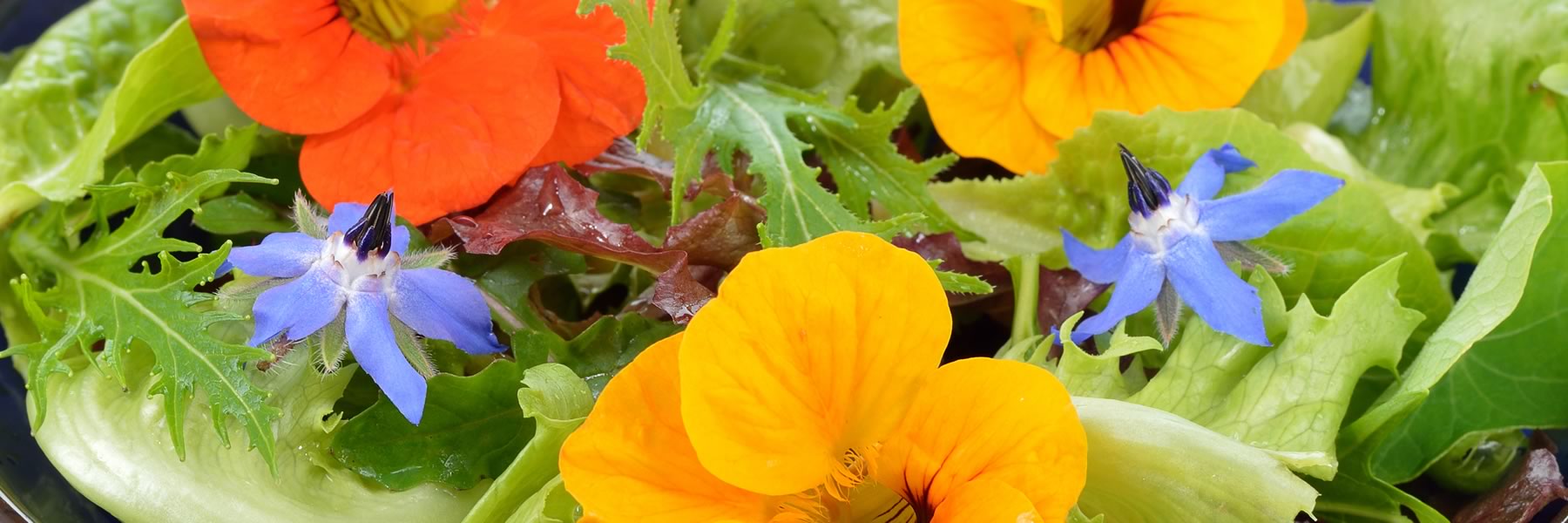Grow Edible Flowers at Home: How To Guide

Imagine transforming your garden into a vibrant, edible paradise where beauty meets utility. Growing edible flowers at home is not just a delightful hobby; it's a way to add a burst of color and flavor to your meals. From salads to cocktails, these blooms can elevate your culinary creations to new heights. So, are you ready to turn your garden into a feast for the eyes and the palate? Let's dive in!
Why Grow Edible Flowers?
Growing edible flowers is akin to painting a masterpiece with nature's palette. Not only do these blooms add a splash of color to your garden, but they also provide a variety of health benefits. From vitamins to antioxidants, edible flowers are a nutritious addition to your diet. Plus, they make for stunning garnishes that can impress even the most discerning foodies.
Getting Started: Choosing Safe Edible Flowers
Before you start planting, it's crucial to choose safe edible flowers. Not all flowers are safe to consume, so do your research. Some popular and safe edible flowers include:
- Nasturtiums: Known for their peppery flavor, these flowers are perfect for salads.
- Pansies: With a mild, slightly sweet taste, pansies add a pop of color to desserts.
- Calendula: Often used in teas and salads, calendula has a tangy, slightly bitter flavor.
- Borage: These star-shaped flowers have a cucumber-like taste and are great in salads and cocktails.
- Chive Blossoms: With a mild onion flavor, chive blossoms are excellent in savory dishes.
For a comprehensive list, check out the Royal Horticultural Society's guide to edible flowers.
Creating Your Edible Flower Garden
Location and Soil Preparation
Choosing the right location is key. Most edible flowers thrive in full sun, so pick a spot that gets at least 6-8 hours of sunlight daily. Ensure the soil is well-draining and rich in organic matter. You can improve your soil by adding compost or well-rotted manure.
Planting Tips
When planting, follow the instructions on the seed packet or plant label. Generally, seeds should be sown directly into the soil, while seedlings can be transplanted. Water your plants regularly, but avoid overwatering, which can lead to root rot.

Caring for Your Edible Flower Garden
Watering and Fertilizing
Consistent watering is essential for healthy growth. Aim for about an inch of water per week, either through rainfall or manual watering. Use a balanced, organic fertilizer to provide the nutrients your flowers need.
Pest Control
Pests can be a nuisance, but there are natural ways to keep them at bay. Companion planting with herbs like mint and rosemary can deter pests. You can also use homemade insecticidal soaps or neem oil sprays.
Harvesting Edible Flowers
Harvesting edible flowers is a delicate process. Here are some tips to ensure you get the best blooms:
- Timing: Harvest flowers in the morning after the dew has dried. This is when they are at their freshest.
- Selection: Choose flowers that are fully open but not yet wilting. Avoid flowers that have been treated with pesticides.
- Handling: Use clean scissors or pruners to cut the flowers. Handle them gently to avoid bruising.

Using Edible Flowers in Your Kitchen
Now that you've harvested your flowers, it's time to get creative in the kitchen. Here are some ideas:
- Salads: Add a handful of edible flowers to your favorite salad for a burst of color and flavor.
- Cocktails: Float a few flowers in your cocktails for a sophisticated touch.
- Desserts: Garnish cakes, cupcakes, or ice cream with edible flowers for a stunning presentation.
- Teas: Infuse your tea with edible flowers for a unique flavor profile.
Conclusion
Growing edible flowers at home is a rewarding experience that combines the joy of gardening with the pleasure of cooking. With a little care and creativity, you can transform your garden into a vibrant, edible oasis. So, why not give it a try? Your taste buds and your garden will thank you!
FAQs
Are all flowers edible? No, not all flowers are edible. Some flowers are toxic and can cause illness if consumed. Always research before eating any flower.
How do I know if a flower is safe to eat? Consult reliable sources like the Royal Horticultural Society or local gardening experts to ensure a flower is safe to eat.
Can I grow edible flowers in pots? Yes, many edible flowers can be grown in pots. Choose a pot with good drainage and use high-quality potting soil.
How often should I water my edible flowers? Water your flowers regularly, aiming for about an inch of water per week. Adjust based on weather conditions and soil moisture.
What should I do if I accidentally eat a toxic flower? If you suspect you've eaten a toxic flower, seek medical attention immediately. Symptoms can vary, so it's best to err on the side of caution.
Happy gardening and bon appétit!
0 Response to "Grow Edible Flowers at Home: How To Guide"
Post a Comment